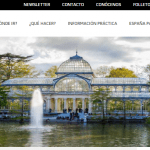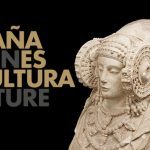The guide to best practices in cultural heritage for smart destinations, developed within the Smart Destinations Network, analyses initiatives developed by 40 national and international destinations that have speeded up their own transformation.
This work has been carried out within the framework of the Smart Tourist Destination Network’s Cultural Heritage working group, which encourages dialogue and participation based on a form of tourism that has proved to be particularly resilient in the post-pandemic scenario.
Led by the Spanish World Heritage Cities Group and coordinated by the Santa María La Real Foundation, the Cultural Heritage Working Group focuses its activities on managing the challenges arising from the Covid-19 crisis, as well as those inherent in the needs related to sustainability values and to the digitalisation of the management of cultural heritage in destinations.
The working group identified the major challenges for the future of heritage tourism, classifying them as follows: governance and heritage tourism – use of resources as a driving force for development to promote tourism; people management – training programmes, citizen participation; sustainable and self-sufficient management – preservation of cultural identity, social co-management of resources; digitalisation, the use of technology as a tool to improve dissemination and management; improvement in the interpretation of data, and the measurement of the activity and prosperity generated.
These challenges have served to classify best practices, which is also categorised by type: adoption of new technologies, information and promotion tools, digitalisation of resources and services, health and safety measures, and exclusive actions in enclosed spaces.
The guide also identifies best practices based on the type of heritage resource in question – architectural sites; museums, archives, libraries; monuments; intangible heritage; historical sites or cultural landscapes – as well as the stage of the smart destination journey it applies to.
The guide presents examples of best practices found in destinations such as Alcalá de Henares, Alcoy, Altea, Antequera, Arona, Ávila, Barcelona, Bizkaia, Cáceres, Calpe, Cartagena, Castro-Urdiales, Comarca de la Sidra, Conil de la Frontera, Córdoba, Gijón, La Adrada, Lorca, Palma, Ponferrada, Ronda, Salamanca, Segovia, Santiago de Compostela, Tequila (Mexico), Toledo, Úbeda, Valencia, Valladolid, Vinaròs and Villena.
Notable among the examples of best practices analysed are the virtual recreation of the medieval walls of Alcoy, the digital interaction systems in Alcalá de Henares, augmented reality in the museums of Antequera, the digital twin of the Ávila City Wall, the Barcelona app check for capacity management, the use of IoT devices to improve the tourist information service in Calpe, the St James Way virtual assistant in the Comarca de la Sidra (Cider Shire).
Other noteworthy initiatives include the cultural and tourism event “Heritage Night” in the 15 cities that make up the Spanish World Heritage Cities Group, the digitalisation of tourist information in Conil de la Frontera, the use of big data and augmented reality to improve the tourist experience at the Patios Festival in Cordoba, and the digital treasure hunt in Morella.
Finally, it is worth highlighting other examples of best practices such as the installation of accessible signage in Osuna, the use of technology to guarantee the preservation of heritage resources in Ponferrada, the digital information displays in Ronda, the online booking platform in Segovia, the 3D digitalisation of monuments in Toledo and the intelligent monumental signage in Úbeda.





